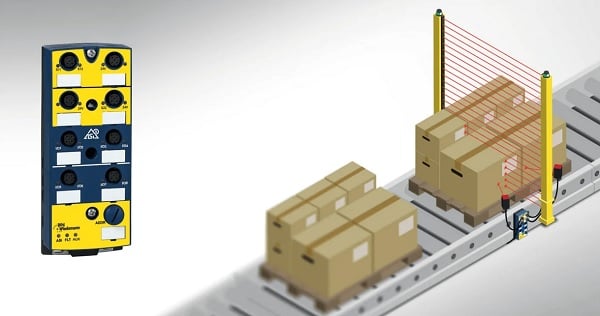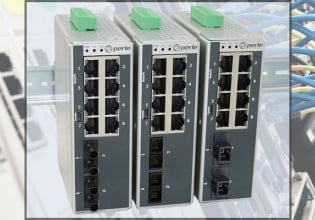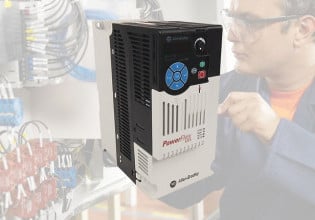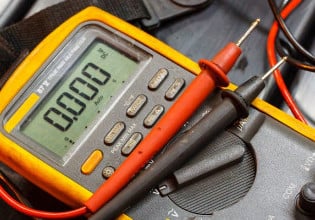Safety Muting Module From Bihl+Wiedemann Reduces False Alarms
Bihl+Wiedemann has released the ASi-5 Muting Module, a device that works alongside light curtains to improve safety systems and keep production lines running with fewer nuisance false triggers.
The ASi-5 Muting Module by Bihl Wiedemann is designed to mute safety alarms, such as light curtains, for certain operations. Muting is not intended to bypass safety systems. Rather, it is used to limit nuisance alarms during normal operations or during maintenance procedures.
What is Light Curtain Muting?
Perhaps the easiest way to explain muting is through example. Consider a conveyor line where the product regularly moves through the line, but people should not access the dangerous motion components unless it is safely brought to a halt.
To prevent personnel from getting too close to the line, certain areas are protected by light curtains. If a hand or other foreign object breaks the light beams, the conveyor line activates an emergency routine and stops running. However, normal packages and products should be able to move down the line without activating the light curtain. One way to perform this task safely is to have the package break certain beams and use their signals to tell the emergency routine that the package is passing through the rest of the light curtain, not a person. In essence, it mutes the emergency routine.

A light curtain between a production line and personnel. Image used courtesy of Prismont
Another example of a proper use case is during certain maintenance tasks, like if the conveyor must be in motion while other robots are being programmed. As long as the programmer is well-trained, they may be permitted to work safely around moving equipment. Rather than sounding an alarm every few seconds, this system will mute these alarms.
Discrimination between Product and Personnel
There are two common methods to determine if an interruption to a light curtain is a person or an object. While not foolproof, these methods can more easily distinguish between the signature of a regular product passing through versus a human operator.

Sequential (left) and cross-configuration (right) of muting sensors. Image used courtesy of Bihl+Wiedemann
The first method is a sequential system, where several sensors must be broken in a certain order. With this method, several sensors are located ahead of the light curtain along the conveyor, such that a package must break the sensors one at a time, in the correct order, to mute the emergency routine.
The second method is a cross-configuration system. For this system, the beams cross at a very specific point. The theory is that an object on this specific point will break both beams simultaneously. If either beam is broken first, the system will alarm. Think of it like the old movies where two keys were required simultaneously to fire a weapon, if one light beam is broken before the other, there is likely a foreign object (perhaps a person) on the line.
ASi-5 Safety Muting Module
The Bihl Wiedemann ASi-5 Safety Muting Module is designed to handle both sequential and cross-configuration muting sensor systems.

The Bihl Wiedemann ASi-5 Safety Muting Module is shown mounted near a light curtain. Image used courtesy of Bihl+Wiedemann
These systems operate through standard Ethernet cables that can be linked with up to four sensors and other controllers. The product series is available with standard integration for PROFIsafe, FSoE, CIP Safety, or Open Safety, all of which are standard safety protocols.
Eliminating Nuisance Alarms
One of the distinct advantages of a system like the ASi-5 Safety Muting Module is the ability to reduce the number of false alarms.
No matter how often a plant manager repeats the mantra of ‘always investigate alarms,’ repetitive nuisance alarms lead to alarm fatigue (laziness), which leads to restarting systems without checking for issues… which, in turn, may lead to injury or death. Any system that can discriminate properly and reduce the number of nuisance alarms will save time and potentially lives.






